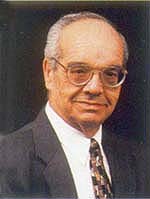All Issues
ANR helps youth prepare for world of work
Publication Information
California Agriculture 56(2):42-42.
Published March 01, 2002
PDF | Citation | Permissions
Full text
As early as 1892, UC demonstrated its commitment to help youth prepare for college and beyond. That year UC Berkeley established the Department of Pedagogy — then consisting of one faculty member. Elmer Ellsworth Brown would soon develop uniform statewide standards for high school teachers. In 1894, UC issued the first high school teaching certificate awarded in California based on these standards.
By 1913, the University was working with school districts to form rural boys and girls clubs. These were the forerunners of UC's statewide 4-H program; by 1918 California 4-H clubs had enrolled 2,000 youth.
Today there are hundreds of outreach programs on all our campuses and throughout the system. They reach tens of thousands of elementary and secondary students. Efforts range from programs that target health and nutritional needs of youth, to special tutoring and counseling, to enrichment and training for teachers.
Yet in spite of many efforts, an increasing number of young Californians need help. While more high school students than ever before attend college, many fall short of their goals. Of California students who enter 4-year colleges, 47% do not attain a degree within 5 years. Youth leaving high school often lack basic skills needed for success in college and the workplace.
In this issue. Agriculture and Natural Resources (ANR) academics present new research into high school students' career awareness and preparation for the workforce ( see p. 48 – 64 ). Workforce preparation — or lack thereof — has become one of the most pressing human resources issues, and is the subject of state and national initiatives.
Research on understanding the best ways to reach, educate and prepare young people to become active, productive citizens is critical. By building a knowledge base in this area, ANR can play a unique role in supporting the efforts of California communities to prepare their youth for the world of work.
Our human resources faculty has already formed several workgroups dedicated to this task. For example, the workforce preparedness workgroup in the Division, in collaboration with the state Workforce Investment Board Youth Council, conducts research on young people's perceptions of their needs for help; 4-H youth development advisors serve on several local youth councils of the board. These councils were created to provide local workforce preparation programs and services primarily to low-income and at-risk youth. Another ANR workgroup has developed a money management curriculum for teens ( see p. 65 ).
ANR faculty are uniquely positioned to extend the results of their research, taking the University to the people statewide. Human resources faculty at UC Davis, Berkeley and Riverside, and the statewide 4-H Center for Youth Development, support the work of 36 youth development advisors and their front-line staff. These advisors in turn provide curricula and programs to schools and community groups, providing enrichment activities, 4-H club work, after-school programs, special interest projects and leadership camps ( see p. 46 ). Today, more than 120,000 children participate in 4-H youth development programs, more than half of them in urban school settings.
Programs in 4-H youth development focus on fostering leadership and citizenship, and developing life skills, through programs that range from hands-on science experiments to nutrition education. Several have become nationwide models for action. For example, we started the nation's first 4-H School-Age Child Care programs in 1983 at two schools in Placer County, a model later adopted in 42 states. Similarly, three 4-H science literacy programs have become national models for community-based science education.
The 4-H Youth Development Program is now in the process of evaluating its mission to build upon such successes. A task force is developing a 4-H mission statement and recommending specific, realistic, high-impact goals for the next 5 to 10 years.
Unique attributes of 4-H are its link to UC research, its strong academic base, and its accumulated expertise in delivering programs to California youth. Through academic work, and work with agencies and community organizations, ANR's programs have the potential to reach the majority of youth and families across California.
Through our human resources faculty and 4-H youth development programs, we seek to address the needs and aspirations of young people — one of the historic missions of the land-grant university. While we are not in the business of preparing or recruiting students for UC admission, we are in the business of preparing young people for life.





